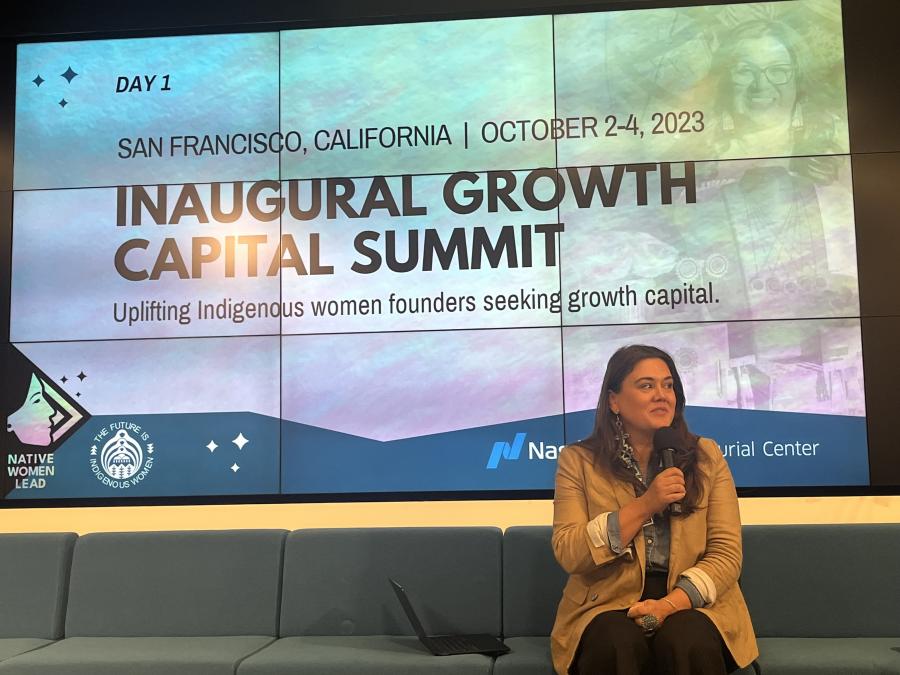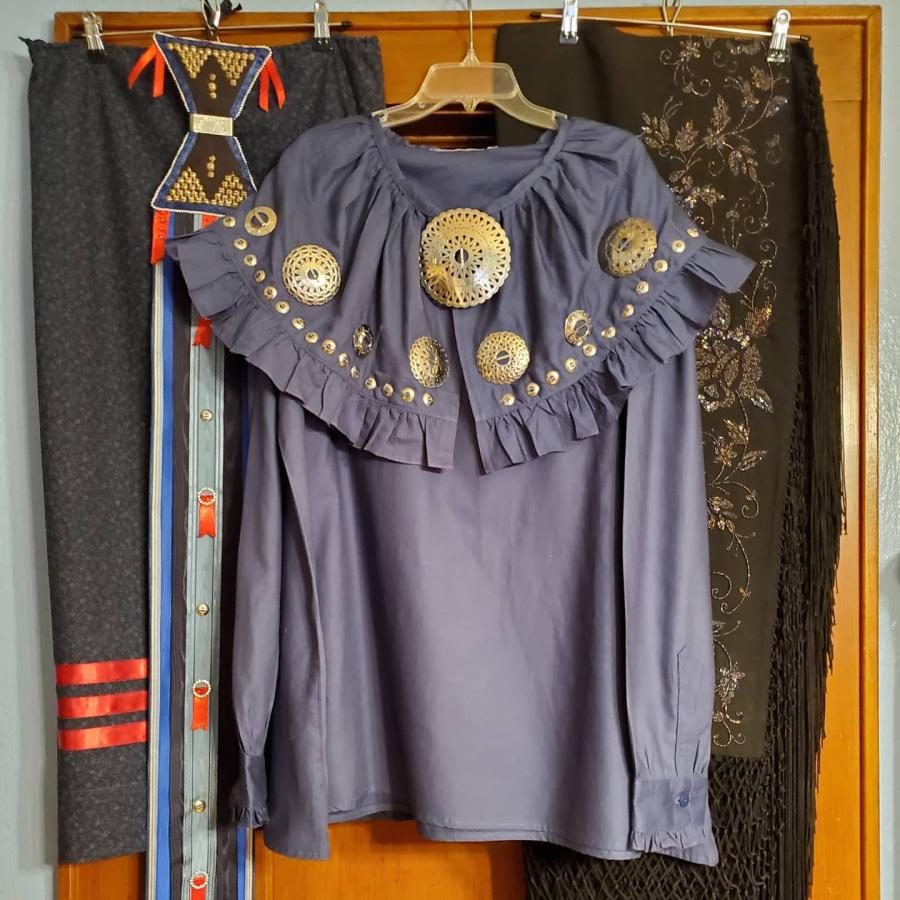“Yes, I know of Sun Bear. He’s a plastic medicine man.”— Matthew King, Oglala Lakota Elder, 1985
The past 30 years have seen the birth of a new growth industry in the United States. Known as “American Indian Spiritualism,” this profitable enterprise apparently began with a number of literary hoaxes undertaken by non-Indians such as Carlos Castaneda, Jay Marks (a.k.a.: “Jamake Highwater,” author of The Primal Mind, etc.), Ruth Beebe Hill (of Hanta Yo notoriety), and Lynn Andrews (Medicine Woman, Jaguar Woman, Crystal Woman, Spirit Woman, etc.). A few Indians such as Alonzo Blacksmith (a.k.a.: “Chunksa Yuha,” the “Indian authenticator” of Hanta Yo), “Chief Red Fox” (Memoirs of Chief Red Fox) and Hyemeyohsts Storm (Seven Arrows, etc.) also cashed in, writing bad distortions and outright lies about indigenous spirituality for consumption in the mass market. The authors grew rich peddling their trash, while real Indians starved to death, out of the sight and mind of America.
This situation has been long and bitterly attacked by legitimate Indian scholars from Vine Deloria, Jr. to Bea Medicine, and by activists such as American Indian Movement (AIM) leader Russell Means, Survival of American Indians, Inc. (SAIL) director Hank Adams, and the late Gerald Wilkenson, head of the National Indian Youth Council (NIYC). Nonetheless, the list of phony books claiming alternately to “debunk” or “expose the innermost meanings of” Indian spirituality continues to grow as publishers recognize a surefire moneymaker when they see one. Most lately, ostensibly scholarly publishers like the University of Chicago Press have joined the parade, generating travesties such as University of Colorado Professor Sam Gill’s Mother Earth: An American Story.
The insistence of mainstream America upon buying such nonsense has led Deloria to conclude that, “White people in this country are so alienated from their own lives and so hungry for some sort of real life that they’ll grasp at any straw to save themselves. But high-tech society has given them a taste for the ‘quick fix.’ They want their spirituality prepackaged in such a way as to provide instant insight, the more sensational and preposterous the better. They’ll pay big bucks to anybody dishonest enough to offer them spiritual salvation after reading the right book or sitting still for the right 15-minute session. And, of course, this opens them up to every kind of mercenary hustler imaginable. It’s all very pathetic, really.”
Oren Lyons, a traditional chief of the Onondaga Nation, concedes Deloria’s point, but says the problem goes much deeper. “Non-Indians have become so used to all this hype on the part of imposters and liars that when a real Indian spiritual leader tries to offer them useful advice, he is rejected. He isn’t ‘Indian’ enough for all these non-Indian experts on Indian religion. Now, this is not only degrading to Indian people, it’s downright delusional behavior on the part of the instant experts who think they’ve got all the answers before they even hear the questions.
“The bottom line here,” says Lyons, “is that we have more need for intercultural respect today than at any time in human history. And nothing blocks respect and communication faster and more effectively than delusions by one party about another. We’ve got real problems today, tremendous problems, problems which threaten the survival of the planet. Indians and non-Indians must confront these problems together, and this means we must have honest dialogue, but this dialogue is impossible so long as non-Indians remain deluded about things as basic as Indian spirituality.”
Things would be bad enough if American Indian realities were being distorted only through books and movies. But, since 1970 there has also been a rapid increase in the number of individuals purporting to sell “Indian wisdom” in a more practical way. Following the example of people such as the “Yogi Ramacharaka” and “Maharaji Ji,” who have built lucrative careers marketing bastardizations of East Asian mysticism, these new entrepreneurs have begun cleaning up on selling “Native American Ceremonies” for a fee.
As Janet McCloud, a longtime fishing rights activist and elder of the Nisqually Nation, puts it, “First they came to take our land and water, then our fish and game. Then they wanted our mineral resources and, to get them, they tried to take our governments. Now they want our religions as well. All of a sudden, we have a lot of unscrupulous idiots running around saying they’re medicine people. And they’ll sell you a sweat lodge ceremony for 50 bucks. It’s not only wrong, it’s obscene. Indians don’t sell their spirituality to anybody, for any price. This is just another in a very long series of thefts from Indian people and, in some ways, this is the worst one yet.”
McCloud is scornful of the many non-Indian individuals who have taken up such practices professionally. “These people run off to reservations acting all lost and hopeless, really pathetic. So, some elder is nice enough, considerate enough to be kind to them, and how do they repay this generosity? After 15 minutes with a spiritual leader, they consider themselves ‘certified’ medicine people, and then run amok, ‘spreading the word’—for a fee. Some of them even proclaim themselves to be ‘official spiritual representatives’ of various Indian peoples. I’m talking about people like Dyhani Ywahoo and Lynn Andrews. It’s absolutely disgusting.”
But her real disdain is for those Indians who have taken up the practice of marketing their heritage to the highest bidder. “We’ve also got Indians who are doing these things,” McCloud continues. “We’ve got our Sun Bears and our Wallace Black Elks and others who’d sell their own mother if they thought it would turn a quick buck. What they’re selling isn’t theirs to sell, and they know it. They’re thieves and sellouts, and they know that too. That’s why you never see them around Indian people anymore. When we have our traditional meetings and gatherings, you never see the Sun Bears and those sorts showing up.”
Thomas Banyacya, a Hopi elder, once observed that the reason for this is because “these people have nothing to say on the matters they claim to be so expert about. To whites, they claim they’re ‘messengers,’ but from whom? They are not the messengers of Indian people. I am a messenger, and I do not charge for my ceremonies.”
Some of the more sophisticated marketeers, such as the late Sun Bear (Vincent LaDuke, a Chippewa), have argued that the criticisms of McCloud and Banyacya are misguided. Sun Bear has claimed that the ceremonies and “wisdom” he peddled are not truly Indian, although they are still “based on” Indian traditions. Still, his promotional literature referred to “Native American Spiritual Wisdom,” offering ceremonies such as the sweat lodge for $50 per session and “vision quests” at $150.
“Since when is the sweat not an Indian ceremony?” demands Russell Means, an outspoken critic of Sun Bear and his colleagues. “It’s not ‘based on’ an Indian ceremony, it is an Indian ceremony. So is his so-called ‘vision quest,’ the pipe, his use of the pipe, sage and all the rest of it. Sun Bear is a liar, and so are all the rest of them who are doing what he’s doing. All of them know good and well that the only reason anybody is buying their product is because of this image of ‘Indian-ness’ they project. The most non-Indian thing about Sun Bear’s ceremonies is that he’s personally prostituted the whole thing by turning it into a money-making venture.’
Sun Bear also contended that criticism of his activities was ill-founded because he has arrived at a spiritual stew of several traditions—his medicine wheel was Shoshone and his herbal and other healing remedies accrued from numerous peoples, while many of his other ceremonies were Lakota in origin—and because he started his own “tribe,” of which he pronounced himself “medicine chief.” Of course, membership in this odd new entity, composed almost exclusively of Euroamericans, came with a hefty price tag attached. The idea has caught on among spiritual hucksters, as is witnessed by the formation of a similar fees-paid group in Florida, headed by a non-Indian calling himself “Chief Piercing Eyes.”
“This is exactly the problem,” says Nilak Butler, an Inuit activist working in San Francisco. “Sun Bear says he’s not revealing some sort of secret Indian ways whenever there are Indians around to hear him. The rest of the time, he’s the most ‘Indian’ guy around, to hear him tell it. Whenever he’s doing his spiel, anyway. But, you see, if there were any truth to his rap, he wouldn’t have to be running around starting ‘new tribes’ and naming himself head honcho and dues collector. He’d be a leader among his own people. “The thing is,” says Rick Williams, a Cheyenne/Lakota working at the University of Colorado, “Sun Bear isn’t recognized as any sort of leader, spiritual or otherwise, among his own people. He’s not qualified. It takes a lifetime of apprenticeship to become the sort of spiritual leader Sun Bear claims to be, and he never went through any of that. He’s just a guy who hasn’t been home to the White Earth Reservation in 25 years, pretending to be something he’s not, feeding his own ego and making his living misleading a lot of sincere, but very silly people. In a lot of ways he reminds you of a low grade Jimmy Swaggart or Pat Robertson-type individual.”
“And another thing,” Williams goes on, “Sun Bear hasn’t started a new tribe. Nobody can just up and start a new tribe. What he’s done is start a cult. And this cult he’s started is playing with some very powerful things, like the pipe. That’s not only stupid and malicious, it’s dangerous.”
The danger Williams refers to has to do with the very power which makes American Indian spirituality so appealing to non-Indians in the first place. According to the late Matthew King, an elder spiritual leader among the Oglala Lakota, “Each part of our religion has its power and its purpose. Each people has their own ways. You cannot mix these ways together, because each people’s ways are balanced. Destroying balance is a disrespect and very dangerous. This is why it’s forbidden.
“Many things are forbidden in our religion,” King continued. “The forbidden things are acts of disrespect, things which unbalance power. These things must be learned, and the learning is very difficult. This is why there are very few real ‘medicine men’ among us; only a few are chosen. For someone who has not learned how our balance is main-tained to pretend to be a medicine man is very, very dangerous. It is a big disrespect to the powers and can cause great harm to whoever is doing it, to those he claims to be teaching, to nature, to everything. It is very bad ...”
For all the above reasons, the Circle of Elders of the Indigenous Nations of North America, the representative body of traditional indigenous leadership on this continent, requested that the American Indian Movement undertake to end the activities of those described as “plastic medicine men.” The possibly sexist descriptor refers to individuals of both genders trading in the commercialization of indigenous spirituality. At its National Leadership Conference in 1984, AIM passed a resolution indicating the will of the elders would be implemented. Specifically mentioned in the AIM resolution were “Sun Bear and the so-called Bear Tribe Medicine Society” and “Wallace Black Elk and [the late] Grace Spotted Eagle of Denver, Colorado,” as well as others like Cyfus McDonald, Brook Medicine Eagle (spelled “Ego” in the resolution), Osheana Fast Wolf and a corporation dubbed “Vision Quest.” Others, such as Dyhani Ywahoo, Rolling Thunder, and “Beautiful Painted Arrow” have been subsequently added to the list.
As Russell Means put it at the time, “These people have insisted upon making themselves pariahs within their own communities, and they will have to bear the consequences of that. As to white people who think it’s cute, or neat or groovy or keen to hook up with plastic medicine men, to subsidize and promote them, and claim you and they have some fundamental ‘right’ to desecrate our spiritual traditions, I’ve got a piece of news for you. You have no such right. Our religions are ours. Period. We have very strong reasons for keeping certain things private, whether you understand them or not. And we have every human right to deny them to you, whether you like it or not.
“You can either respect our basic rights or not respect them,” Means went on. “If you do, you’re an ally and we’re ready and willing to join hands with you on other issues. If you do not, you are at best a thief. More importantly, you are a thief of the sort who is willing to risk undermining our sense of the integrity of our cultures for your own perceived self-interest. That means are you complicit in a process of cultural genocide, or at least attempted cultural genocide, aimed at American Indian people. That makes you an enemy, to say the least. And believe me when I say we’re prepared to deal with you as such.” Almost immediately, the Colorado AIM chapter undertook a confrontation with Sun Bear in the midst of a $500-per-head, weekend-long “spiritual retreat” being conducted near the mountain town of Granby. The action provoked the following endorsement from the normally more staid NIYC:
The National Indian Youth Council fully supports your efforts to denounce, embarrass, disrupt, or otherwise run out of Colorado, the Medicine Wheel Gathering ... For too long the Bear Tribe Medicine Society has been considered a repugnant but harmless to Indian people. We believe they not only line their pockets but do great damage to all of us. Any-thing you can do to them will not be enough.
The Colorado AIM action, and the strength of indigenous support it received, resulted in a marked diminishment of Sun Bear’s reliance upon the state as a source of revenue. Since then, AIM has aligned itself solidly and consistently with indigenous traditionalism, criticizing Sun Bear and others of his ilk in public fashion, and occasion-ally physically disrupting their activities in locations as diverse as Denver and Atlanta. Those who wish to assist in this endeavor should do so by denouncing plastic medicine folk wherever they appear, organizing pro-active boycotts of their events, and demanding that local bookstores stop carrying titles, not only by Sun Bear and his non-Indian sidekick “Wabun,” but charlatans like Castaneda, Highwater, Andrews and Storm as well. Use your imagination as to how to get the job done in your area, but make it stick. You should also be aware that Sun Bear and others have increasingly aligned themselves with such non-Indian support groups as local police departments, calling upon them to protect him from “Indian interference” with his unauthorized sale of Indian spirituality.
Editor’s note: This essay was originally published by Z Magazine in December 1990. It was subsequently collected in Ward Churchill’s From a Native Son: Selected Essays in Indigenism, 1985-1995. (Boston: South End Press, 1996).
Ward Churchill (Keetoowah Band Cherokee) is professor of American Indian studies and chair of the department of ethnic studies at the University of Colorado-Boulder.



